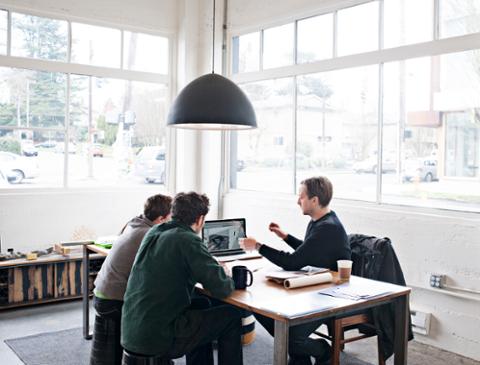User experience (UX) designers play a critical role in shaping the success of products and services across various industries, from smartphone interfaces to enterprise resource planning (ERP) software. Many of these UX designers are freelancers; in those cases, what does a freelance UX designer career path look like?
What Does a Freelance UX Designer Do?
In broad strokes, a UX designer's primary focus lies in understanding user needs, behaviors, and preferences to design interfaces that are not only visually appealing but also highly functional and user-friendly. With the increasing reliance on digital interfaces for everyday tasks, the demand for skilled UX designers has surged dramatically.
Those with a passion for crafting engaging and efficient digital experiences can build a lucrative, if perhaps unconventional, career as a freelance UX designer.
Thomas Vick, senior regional director at Robert Half Technology, explains the career path for a freelancer is typically someone who gains experience in UX within an organization, and then goes into freelancing because they like the freedom to work with multiple clients, as opposed to climbing the career ladder with one firm.
“They like the flexibility and the fact that they're working in new environments all the time,” he says. “It's about growing your client base.”
To successfully launch a freelance UX design career, you must have some strong prior work experience and a portfolio you can present to potential clients.
“You need quite a bit of experience when it comes to UX, because every client will want to see your work ahead of time and determine what it is like compared to what their current design looks like,” Vick says. “By showing the work you have done on previous projects or other clients is how you build your client base.”
How Do I Get Started as a Freelance UX Designer?
Darren Sharp, CEO of S-SA Digital, adds that a strong portfolio demonstrating not only the finished products but how you arrived at design decisions is indispensable before starting off as a freelancer. “The key point is that it's not just about the design—it's the wire framing, it's all the pieces that go with it, whiteboarding your journey, adding some analytics or UX research helps fill out your portfolio,” he says. (Having a great UI/UX designer resume never hurts, either.)
In addition to having excellent design skills, Vick notes it's also important to become more of a full stack developer, given companies’ needs for UX designers who know their way around everything from website storefronts to cloud tools.
Being able to better understand the back end programming language and how that is affecting the front end is extremely valuable. “It will help open doors for opportunities where an organization needs somebody to understand that part of development in addition to the front end UX component,” he explains. “Any experience you can get in mid or back end development is definitely helpful.”
What Skills Do Freelance UX Designers Need to Learn?
Based on job postings, many employers ask freelance UX designers for some combination of the following skills:
- Prototyping: Creating a tangible representation of a final webpage, app, or other product to gather feedback and refine the design.
- Wireframing: A simplified skeleton of a webpage or app, devoid of any visual elements, allowing for clear evaluation and adjustments to the underlying structure.
- User Flow: The journey a user takes to navigate and interact with a product, ensuring a seamless and intuitive experience.
- User Research: The process of gathering insights into user needs, preferences, and behaviors to inform design decisions and create a user-centered product.
- User Testing: Evaluating product prototypes with real users to identify usability issues, refine the design, and ensure an optimal user experience.
- Project Management: Effectively planning, organizing, and coordinating project tasks to meet deadlines, deliverables, and stakeholder expectations.
- Information Architecture: The organization and presentation of information on a website or app, ensuring easy accessibility, understanding, and fulfillment of user needs.
- Agile/Scrum: A project management framework that promotes iterative design, continuous improvement, and rapid adaptation to changing requirements.
- Coding: Familiarity with coding principles and practices enables UI/UX designers to communicate more effectively with developers and engineers, ensuring seamless implementation of design concepts.
You may also need to master some combination of the following tools:
- Adobe XD: a tool for prototyping designs.
- Sketch: An end-to-end design tool.
- Balsamiq: a UI wireframe tool.
- Marvel: A rapid prototyping tool.
- FlowMapp: A web designer tool.
- Zeplin: A UI/UX tool for developer/designer collaboration.
If you’re a self-learner, some popular online courses can help you learn and master the nuances of UX design work, including:
- Career Foundry’s 10 Best Free UX Design Courses
- Coursera UI/UX courses (from Google, IBM, and others)
- Udemy
- General Assembly
- DesignLab
- SkillShare
Freelance UX Designers Also Need Entrepreneurial Spirit, Time Management
Sharp says having an entrepreneurial spirit is essential—the confidence to “go out and knock on doors” and be prepared for the ups and downs that come with working for yourself. “You have to be prepared to be in work for three months, then potentially have to start going to look for money again,” he says. “There isn't that security of being employed, but potentially the gains are better.”
From Vick's perspective, time management is perhaps the most important skill for a freelance UX designer. “If you're good at this, you can start to take on a lot of projects very quickly, and each one of those projects comes with its own deadline,” he says. “You must be able to balance that out and understand what the timeline is for one project compared to the work you already have and how are you going to be able to manage that time.”
He often sees people with freelance UX backgrounds and experience get in over their head with too many projects because they think they can take it all on, and then they begin to miss deadlines. “Their work begins to suffer, and it hurts their reputation,” he says. “The time management component and knowing what you can and can't take on is extremely important.”
Vick adds the other crucial skill is the ability to explain their work to clients their work, what they're going to do and how that will affect what is already there.
“You must be able to communicate how your ideas will create revenue, save time, save money, or whatever it might be—being able to explain the return on it is crucial,” he says.
What Should Freelance UX Designers Charge?
Whatever your pricing structure—some freelance UX designers opt to charge by the project, while others charge by the hour—keep in mind that you’ll need to cover the following:
- Your health insurance (unless it’s being covered by someone else)
- Business-related expenses (such as travel and internet costs)
- Taxes (which can vary wildly between states and metro areas)
- Your life (mortgage, food, gas, and more)
According to the most recent Dice Tech Salary Report, the average UI/UX designer salary is $97,716 per year.
What Do Freelance UX Designers Need to Know About Consulting?
Vick points out that, beyond expanding your client base (which bumps up against time management constraints eventually), freelance UX designers can grow their careers by offering their services in the form of a consultant role.
“You might be looking at someone else's work or advising on someone else's work, but you're not actually having to take the time to do it,” he says. “The other is mentoring and helping others that might want to be in freelance or even consulting those individuals and charging for it.”
A natural extension of the consulting or mentoring role would also be teaching UX design at the university level, which Vick points out could also pay dividends in the form of new clients.
“All those people you're teaching are then going to get jobs at organizations and grow their careers,” he says. “They will remember who taught them how to do it, come back and utilize that person for additional freelance work.”
Sharp points out successful freelance UX designers are also continuing their education, studying up on the latest design trends, and trotting out the same solutions to different problems.
“You need to be part of forms, user groups and meetups and understanding the next trends and always be evolving,” he explains. “Freelancing can be a lonely place. You can't be afraid to go into these groups and forums and look at new trends, look at what people are doing, be places where you can sit and chat and understand what's happening, what other people are doing. That way you're learning and you'll evolve.”


